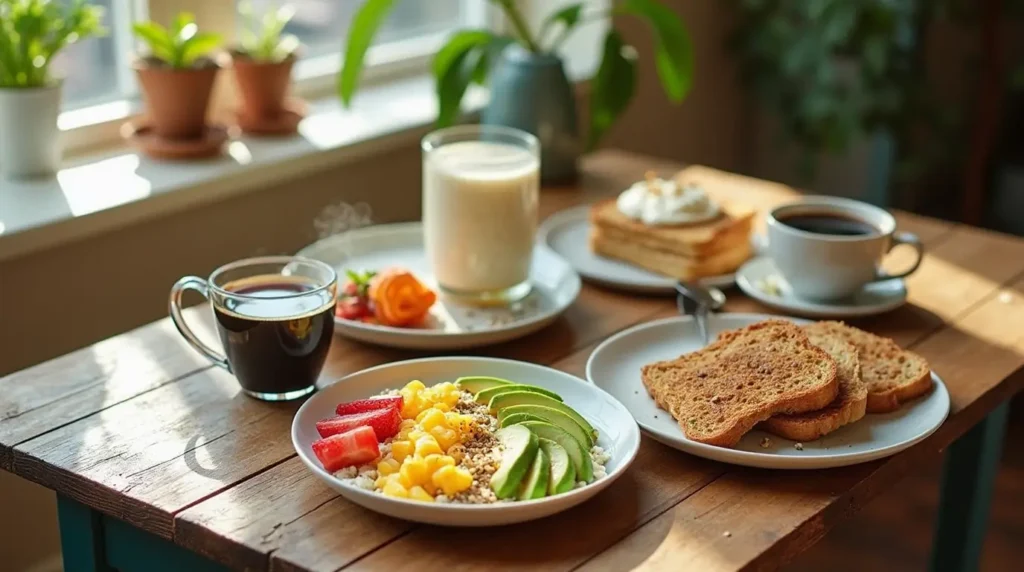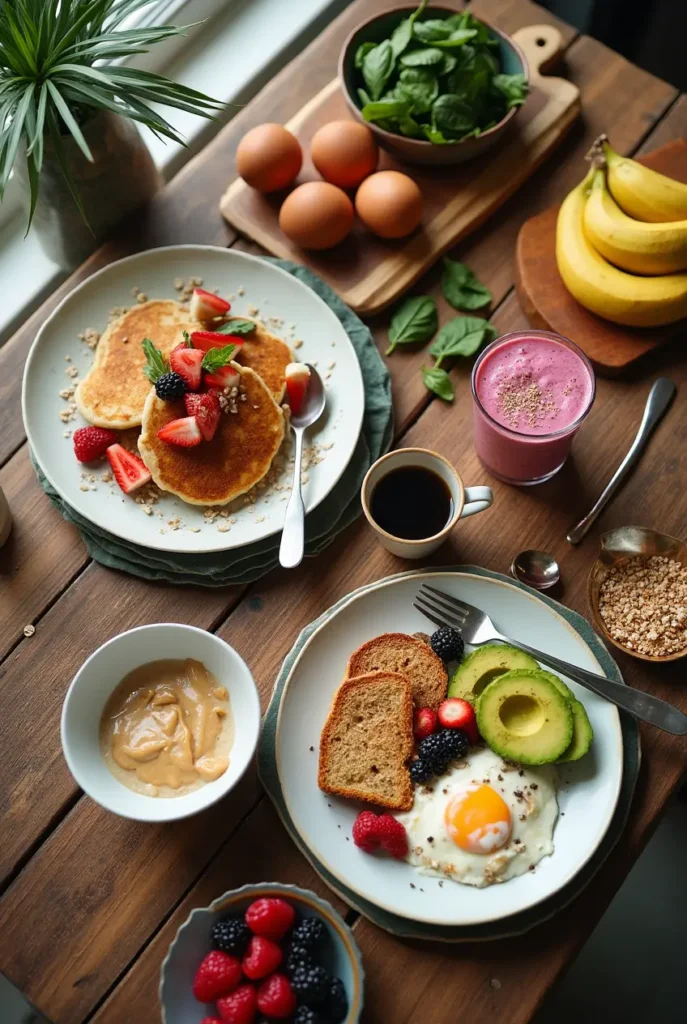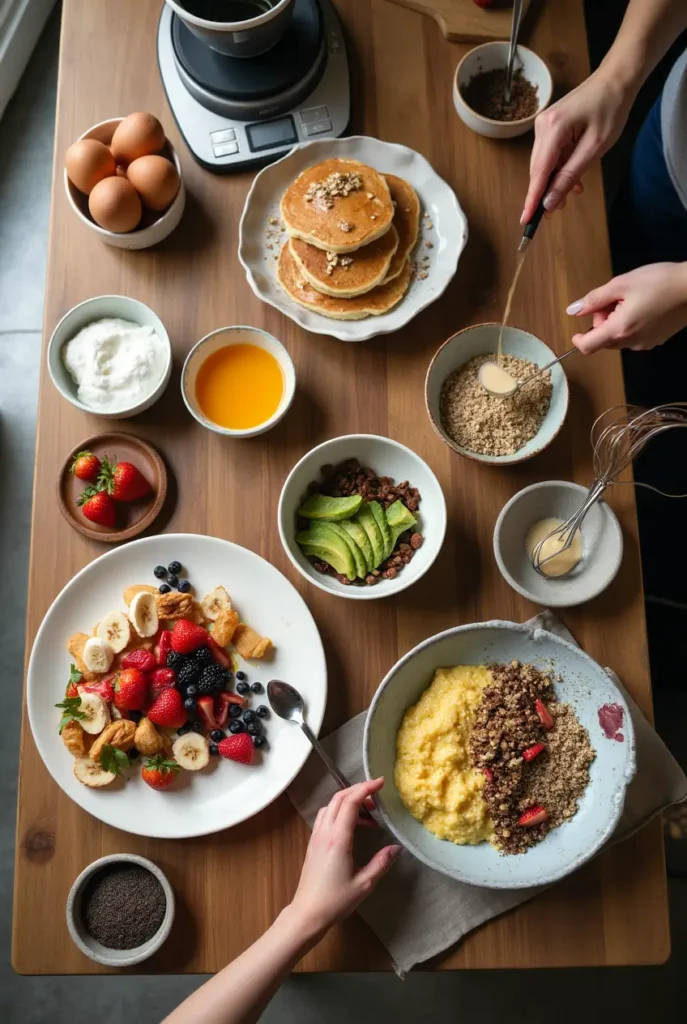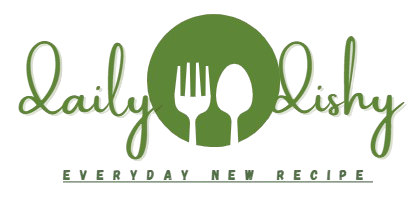Ever feel like breakfast is the hardest meal to balance? You want something delicious, filling, and nutritious, but finding the right mix of protein, healthy fats, and complex carbs can be a challenge. That’s where macro friendly breakfast recipes come in!
These recipes are designed to fuel your body, keep you satisfied for hours, and support your fitness goals—whether you’re looking to build muscle, stay energized, or simply enjoy a healthier morning routine. The best part? They’re easy to make, totally customizable, and packed with flavor.
Table of Contents :
From protein-rich pancakes to savory egg muffins and hearty oatmeal bowls, this collection of 10 easy and delicious ideas will transform your breakfast game. Ready to start your day with a balanced, tasty meal? Let’s dive in!

1. Key Benefits of Macro Friendly Breakfast Recipes
Starting your day with a balanced breakfast is one of the best ways to ensure sustained energy and proper nutrition throughout the morning. Macro friendly breakfast recipes are designed to give your body the right balance of macronutrients—protein, carbs, and healthy fats—so you can power through your day feeling energized and satisfied. Let’s dive into the key benefits of choosing these recipes for your morning routine!
1. Balanced Nutrition to Keep You Full
One of the standout benefits of macro friendly breakfast recipes is that they provide a well-rounded mix of macronutrients. Protein helps to build and repair muscles, while healthy fats provide long-lasting energy. Complex carbs, like whole grains and vegetables, fuel your body with slow-digesting energy. This balance keeps you full longer and prevents those mid-morning cravings.
2. Supports Your Fitness Goals
Whether you’re aiming to lose weight, build muscle, or simply maintain a healthy lifestyle, macro friendly breakfasts are a great way to stay on track with your goals. A balanced breakfast stabilizes blood sugar levels, which can help manage cravings and keep energy levels steady. Plus, choosing the right balance of macros in your breakfast sets the tone for the rest of your meals throughout the day.
3. Increases Energy Levels
Ever notice how a sugary breakfast like a donut or sweet cereal can lead to an energy crash just a few hours later? With macro friendly breakfast recipes, you’ll get a steady supply of energy throughout the morning. Protein and healthy fats are digested more slowly than sugars and simple carbs, meaning your body is fueled consistently, and you won’t experience those energy dips mid-morning.
4. Helps with Weight Management
If weight management is a priority, macro friendly breakfast recipes can be a helpful tool. Protein-rich foods help curb appetite, and fiber-filled ingredients (like avocado, whole grains, and fruits) promote fullness. By stabilizing blood sugar, these breakfasts prevent the sharp spikes and drops in energy that can lead to overeating later in the day.
2. Ingredients for Macro Friendly Breakfast Recipes
A great macro friendly breakfast starts with quality ingredients. These whole, nutrient-packed foods not only fuel your body but also taste amazing, helping you stay satisfied all morning long. Below, I’ve outlined some of the key ingredients that will help you create balanced, healthy breakfasts that are easy to make and delicious to eat.

1. Protein Sources
Protein is a crucial part of any macro friendly breakfast. It helps build and repair muscle, boosts metabolism, and keeps you feeling full longer. Here are some great options:
- Eggs: Packed with high-quality protein and healthy fats, eggs are versatile and quick to cook.
- Greek Yogurt: Thick, creamy, and rich in protein, Greek yogurt is perfect for smoothies or parfaits.
- Cottage Cheese: A high-protein option that pairs well with both savory and sweet dishes.
- Tofu: For a plant-based option, tofu is a great protein substitute in scrambles and smoothies.
Pro Tip: Opt for organic or pasture-raised eggs whenever possible for a cleaner, more nutritious choice.
2. Healthy Fats
Incorporating healthy fats into your breakfast is key for balanced energy and brain function. Healthy fats also help your body absorb fat-soluble vitamins (like A, D, E, and K). Here are some sources to consider:
- Avocados: Full of heart-healthy monounsaturated fats, avocado is great on toast or blended into smoothies.
- Nuts and Seeds: Almonds, walnuts, chia seeds, and flaxseeds are packed with healthy fats and protein, plus they add a nice crunch to dishes.
- Nut Butters: Peanut butter, almond butter, or cashew butter are delicious ways to add healthy fats and flavor to your breakfast.
Pro Tip: A tablespoon of chia seeds or flaxseeds in your smoothie can boost both fiber and omega-3 fatty acids.
3. Complex Carbs
Carbs are essential for energy, especially in the morning when your body needs fuel after a night’s rest. However, to keep your blood sugar stable, you’ll want to focus on complex carbs that digest slowly:
- Oats: A breakfast classic, oats are a great source of fiber, keeping you full and satisfied for hours.
- Sweet Potatoes: High in fiber and antioxidants, sweet potatoes make an excellent base for savory breakfast bowls.
- Whole Grains: Quinoa, farro, and brown rice are excellent sources of complex carbs and can be used in a variety of breakfast dishes.
Pro Tip: For a fiber boost, add some ground flax or chia seeds to your oatmeal or overnight oats.
4. Fresh Fruits and Vegetables
Fruits and vegetables add color, flavor, and a wealth of vitamins to your macro friendly breakfast. Aim for a variety of colors on your plate to ensure a wide range of nutrients:
- Berries: Blueberries, strawberries, and raspberries are rich in antioxidants and make the perfect topping for oats or yogurt bowls.
- Spinach: A fantastic source of iron and fiber, spinach can easily be added to scrambled eggs or smoothies.
- Bananas: High in potassium, bananas help maintain electrolyte balance and are great for smoothies or topped on toast with nut butter.
Pro Tip: Try adding a handful of spinach to your morning smoothie or eggs for an easy veggie boost.
5. Dairy or Dairy Alternatives
While not essential, dairy or dairy-free alternatives can add creaminess, flavor, and extra nutrients to your breakfast:
- Almond Milk: A low-calorie, dairy-free option that’s perfect for smoothies, oats, or baking.
- Cow’s Milk: If you’re not dairy-sensitive, opt for organic milk for extra calcium and protein.
- Cheese: For a savory option, cheese like feta or cheddar can be a delicious addition to egg-based dishes.
Pro Tip: When choosing dairy alternatives, look for unsweetened options to avoid unnecessary added sugars.
3. How to Make Macro Friendly Breakfast Recipes
Making a macro friendly breakfast doesn’t have to be complicated or time-consuming. With the right ingredients and a few simple techniques, you can create a meal that’s both balanced and delicious. Below, I’ll guide you through the steps for making a versatile, nutrient-packed breakfast that fits perfectly into your busy mornings. Whether you’re cooking for yourself or a group, these easy instructions will have you feeling like a breakfast pro in no time.

Step 1: Choose Your Base (Protein, Carbs, and Healthy Fats)
The first step in any macro friendly breakfast is selecting the right base. This is where you’ll balance your protein sources, complex carbs, and healthy fats. Here are some ideas:
- Eggs and Whole Grain Toast: Eggs are a great protein source, and whole-grain toast provides slow-digesting carbs for sustained energy.
- Overnight Oats with Chia Seeds: Perfect for meal prep! Oats offer fiber, while chia seeds pack a punch of protein and healthy fats.
- Smoothie Bowl with Greek Yogurt: Yogurt adds protein and creaminess, while fruit and granola provide complex carbs and fiber.
Pro Tip: To ensure you hit your macro goals, try adding a serving of protein powder to your smoothie or yogurt bowl if you’re looking to increase protein intake.
Step 2: Cook Your Protein
Protein is key to keeping you full and satisfied, so it’s essential to get it right. Here’s how to prepare some popular protein options:
- Scrambled Eggs: Heat a non-stick pan over medium heat. Crack 2–3 eggs and whisk them with a pinch of salt and pepper. Cook, stirring occasionally, until the eggs are soft and fluffy.
- Tofu Scramble: For a plant-based option, crumble firm tofu into a pan with some olive oil, and sauté with your favorite seasonings like turmeric, garlic powder, and nutritional yeast. It mimics scrambled eggs perfectly!
Pro Tip: If you’re meal prepping, cook several servings of eggs or tofu scramble at once and store them in the fridge for quick breakfasts all week.
Step 3: Add Your Carbs
Carbs are your body’s primary source of energy, and adding the right ones to your breakfast ensures you stay fueled for hours. Here are a few easy options:
- Overnight Oats: Combine rolled oats with almond milk, chia seeds, and a drizzle of honey or maple syrup in a jar. Let them sit overnight in the fridge for a grab-and-go breakfast.
- Sweet Potato Hash: Dice sweet potatoes and sauté them with olive oil, onions, and your favorite veggies. This makes a hearty, filling carb option.
- Quinoa Breakfast Bowl: Cook quinoa and top with fruit, nuts, and a spoonful of Greek yogurt for a refreshing, protein-packed dish.
Pro Tip: If you’re looking to keep your carbs lower, swap regular oats for steel-cut oats or quinoa for a lower glycemic index alternative.
Step 4: Add Healthy Fats
Healthy fats are essential for absorbing vitamins and keeping you full longer. Try adding one or more of the following:
- Avocado: Mash half an avocado and spread it on your toast or add it to your smoothie bowl for a creamy texture.
- Nuts and Seeds: Almonds, walnuts, or flaxseeds are great choices for sprinkling over your oats or yogurt.
- Nut Butter: A tablespoon of almond or peanut butter adds richness to your oatmeal, smoothie, or whole-grain toast.
Pro Tip: For a quick and easy breakfast, top your eggs with sliced avocado for that satisfying fat boost.
Step 5: Add Toppings and Extras
This is the fun part—adding flavor and texture to your macro friendly breakfast! Here are some ideas to elevate your dish:
- Fresh Fruit: Berries, bananas, and apples add natural sweetness and antioxidants to your meal. Top your oats or smoothie bowl with a handful of fresh fruit.
- Greek Yogurt: A dollop of yogurt makes your breakfast creamy and adds a boost of protein.
- Granola or Coconut Flakes: For some crunch, sprinkle granola or toasted coconut flakes on top of your breakfast bowl.
Pro Tip: Make your breakfast even more satisfying by adding a sprinkle of cinnamon or cacao powder for extra flavor without added sugar.
4. Pro Tips and Variations for Macro Friendly Breakfast Recipes
Creating a macro friendly breakfast doesn’t have to be a one-size-fits-all affair. There’s plenty of room to get creative and customize your breakfast to suit your dietary needs, preferences, and time constraints. Whether you’re looking to increase protein, make the meal more filling, or add some fun twists, here are a few pro tips and variations to help you get the most out of your macro friendly breakfast recipes.
1. Boost Protein Intake
If you’re aiming for a higher protein breakfast to support muscle growth or keep you feeling fuller for longer, there are plenty of easy ways to up your protein game:
- Add Protein Powder: Stir a scoop of your favorite protein powder into your smoothie, oats, or yogurt bowl. It’s an effortless way to pack in extra protein without changing the flavor too much.
- Use Greek Yogurt: Greek yogurt is packed with protein, and it makes for a great base in smoothies or parfaits. Swap out regular yogurt for Greek for a higher protein boost.
- Egg Whites: If you’re looking to cut down on fat but still need protein, try using egg whites in your scrambled eggs or omelets. You can even mix them with whole eggs for a balanced approach.
2. Make It Low-Carb
For those following a low-carb diet or looking to reduce carb intake, there are several substitutions you can make without sacrificing flavor or nutrition:
- Swap Oats for Chia Pudding: Instead of oats, make a simple chia pudding by combining chia seeds with almond milk and letting it sit overnight in the fridge. It’s a lower-carb, high-fiber option that still keeps you feeling satisfied.
- Sweet Potato Hash: If you’re craving a hearty breakfast but want to skip the carbs from grains, try a sweet potato hash. It’s a nutritious, lower-carb alternative to oats or quinoa.
- Cauliflower Rice: For a savory breakfast, consider using cauliflower rice as a base for eggs and avocado instead of traditional grains like quinoa or brown rice.
3. Customize for Dietary Preferences
Macro friendly breakfasts are versatile and can easily be adjusted to accommodate specific dietary needs, whether you’re plant-based, gluten-free, or dairy-free. Here are a few ways to customize:
- For Plant-Based Eaters: Substitute dairy-based ingredients like yogurt and cheese with plant-based options such as coconut yogurt or tofu. Tofu scramble can be a great substitute for eggs, offering a protein-packed, plant-based breakfast option.
- Gluten-Free Options: If you’re avoiding gluten, focus on naturally gluten-free ingredients like oats, quinoa, sweet potatoes, and eggs. Many gluten-free flours can also be used for pancakes or baking, ensuring you don’t miss out on your favorite breakfast foods.
- Dairy-Free Alternatives: Choose almond milk, coconut milk, or oat milk instead of cow’s milk. Many plant-based milks are fortified with calcium and vitamin D to keep your breakfast nutritious.
4. Add Extra Fiber
Fiber is essential for good digestion and keeping you feeling full throughout the morning. Here are some simple ways to boost fiber in your breakfast:
- Add Ground Flaxseeds or Chia Seeds: Both flaxseeds and chia seeds are excellent sources of fiber, omega-3s, and antioxidants. Sprinkle them on your oats, yogurt, or smoothie bowl for an added nutritional punch.
- Include Berries and Apples: Berries like raspberries, blackberries, and strawberries are high in fiber and antioxidants. Similarly, apples are another great fiber-rich fruit that pairs well with yogurt or oatmeal.
- Add Vegetables: It might sound unusual, but adding leafy greens like spinach or kale to your smoothie is an easy way to increase fiber without changing the flavor much.
5. Perfect for Meal Prep
If mornings are rushed, meal prep is your best friend. Many macro friendly breakfast recipes are perfect for preparing ahead of time, saving you time and stress during the week. Here’s how:
- Overnight Oats: Prep your oats the night before by mixing them with almond milk, chia seeds, and your choice of sweetener. Let them sit in the fridge overnight, and you’ll have a ready-to-eat, nutrient-packed breakfast.
- Breakfast Muffins or Bars: Make a batch of healthy breakfast muffins or protein bars that are easy to grab-and-go. You can bake these with oats, eggs, nuts, and fruit for a balanced breakfast option.
- Make a Big Batch of Sweet Potato Hash: Sweet potato hash can be cooked in large batches and stored in the fridge for a few days. Reheat portions throughout the week for a savory, filling breakfast.
5. Serving Suggestions for Macro Friendly Breakfast Recipes
Once you’ve prepared your macro friendly breakfast, it’s time to take your meal to the next level with some delicious serving ideas. A well-served dish not only enhances the visual appeal but also boosts your enjoyment. Here are some creative and practical ways to serve your breakfast that will keep you excited for every meal.
1. Create a Balanced Breakfast Bowl
Breakfast bowls are a fantastic way to combine different macro-friendly ingredients into one satisfying dish. The beauty of a breakfast bowl is the endless possibilities for customization while ensuring a balanced mix of protein, healthy fats, and complex carbs.
- Base: Start with a protein-packed base like Greek yogurt or tofu scramble. If you’re looking for a more filling option, use quinoa or sweet potatoes as your base.
- Toppings: Add a variety of toppings like berries, nuts, seeds, and a drizzle of nut butter for extra flavor and texture.
- Sprinkles: A sprinkle of cinnamon, chia seeds, or flaxseeds can elevate the taste while adding fiber and antioxidants.
2. Pair with Fresh Fruit
To add a refreshing and nutritious touch to your breakfast, pairing your meal with fresh fruit is always a great idea. Not only does it balance out your meal with natural sweetness, but fruits also provide extra fiber, vitamins, and antioxidants.
- Berry Medley: A combination of blueberries, raspberries, and blackberries will brighten up your plate while adding antioxidants and a burst of flavor.
- Sliced Bananas or Apples: These are perfect for topping your overnight oats or toast. They add a natural sweetness that pairs wonderfully with nut butter or Greek yogurt.
3. Add a Side of Veggies
For those looking to make their breakfast even more nutrient-dense, adding a side of vegetables is a fantastic way to boost fiber and vitamins. You can make this savory or sweet depending on your flavor preferences.
- Spinach or Kale: A handful of leafy greens like spinach or kale can be sautéed with olive oil and added as a side dish to scrambled eggs or tofu.
- Roasted Veggies: Try roasting zucchini, sweet potatoes, or bell peppers for a savory option that pairs beautifully with eggs, avocado, or quinoa.
4. Top Your Toast with a Twist
Whole-grain toast is a classic breakfast option, but you can easily give it a modern twist by experimenting with different toppings. These combinations are delicious and will keep you feeling satisfied throughout the morning.
- Avocado & Egg: Spread mashed avocado on your toast, and top with a poached or scrambled egg for a satisfying meal that’s packed with healthy fats and protein.
- Nut Butter & Banana: For a sweeter twist, spread almond or peanut butter on your toast and top it with banana slices. Add a sprinkle of chia seeds for extra crunch and fiber.
5. Serve with a Refreshing Beverage
A refreshing beverage can complement your macro friendly breakfast and keep you hydrated. Whether you prefer something hot or cold, here are some options to consider:
- Green Tea: Packed with antioxidants, green tea is a light and refreshing choice that pairs well with savory or sweet breakfasts.
- Protein Smoothie: If you want to boost your protein intake, blend a protein powder with almond milk, spinach, and fruit for a quick and nutritious drink.
- Iced Coffee: For a little caffeine kick, iced coffee is perfect, especially if you’re craving something cool and energizing.
Macro Friendly Breakfast Recipes

Struggling to find quick and healthy breakfast ideas? Check out these 10 Macro Friendly Breakfast Recipes that are both easy and delicious. Try them today!
- 2 large eggs
- ½ cup rolled oats
- ½ cup Greek yogurt (plain, nonfat)
- 1 small banana (mashed)
- 1 tbsp chia seeds
- 1 tbsp almond butter
- ½ tsp cinnamon
- ½ cup mixed berries (strawberries, blueberries, raspberries)
- 1 slice whole grain bread
- ½ avocado (sliced)
- 1 tsp honey (optional)
- Prepare the ingredients – Gather all items and measure portions accurately.
- Make the oats – In a bowl, mix rolled oats, Greek yogurt, mashed banana, chia seeds, and cinnamon. Let it sit for 5 minutes to thicken.
- Cook the eggs – Scramble or fry the eggs in a nonstick pan over medium heat. Season with salt and pepper.
- Toast the bread – Toast the whole grain bread and top with sliced avocado and a sprinkle of chia seeds.
- Assemble the plate – Arrange the oats, eggs, toast, and berries on a plate for a balanced macro-friendly meal.
- Enjoy – Optionally, drizzle a small amount of honey over the oats for added sweetness.
6. FAQs for Macro Friendly Breakfast Recipes
1. What makes a breakfast “macro friendly”?
A macro friendly breakfast refers to a meal that is balanced in the three main macronutrients: proteins, fats, and carbohydrates. By ensuring your breakfast includes all three, you’ll feel satisfied, energized, and ready to tackle the day.
- Proteins: Eggs, Greek yogurt, tofu, and protein powders are great sources.
- Fats: Avocado, nuts, seeds, and coconut oil provide healthy fats.
- Carbohydrates: Oats, quinoa, sweet potatoes, and fruits offer complex carbs for sustained energy.
By balancing these macros, you’re setting yourself up for a nutritious start to your day.
2. How can I make my breakfast higher in protein?
If you’re looking to add more protein to your breakfast, there are plenty of simple ways to do so without compromising taste. Here are some quick ideas:
- Add a scoop of protein powder to smoothies, overnight oats, or yogurt bowls.
- Include eggs or egg whites in your breakfast for an easy protein-packed option.
- Swap regular yogurt for Greek yogurt for a higher-protein alternative.
- Top your oats or pancakes with a spoonful of nut butter like almond or peanut butter for an added protein boost.
3. Can I make these recipes gluten-free?
Yes! Many macro friendly breakfast recipes are naturally gluten-free or can be easily adapted. Here’s how:
- Use gluten-free oats for your oatmeal or overnight oats.
- Opt for quinoa or brown rice instead of wheat-based grains for a filling breakfast.
- Choose gluten-free flours (like almond flour or coconut flour) when making pancakes or baked goods.
- Skip the bread in favor of sweet potato hash or gluten-free toast for savory options.
If you’re sensitive to gluten, just double-check labels on ingredients like oats or sauces to ensure they’re certified gluten-free.
4. How do I meal prep my macro friendly breakfasts?
Meal prepping your breakfast can save you time during busy mornings while ensuring you stay on track with your nutrition. Here’s how to get started:
- Overnight oats: Prepare individual servings in mason jars or containers the night before. Customize with your favorite fruits, seeds, and nut butters.
- Egg muffins: Bake eggs with veggies and cheese in muffin tins for an easy grab-and-go breakfast.
- Smoothie packs: Pre-portion your smoothie ingredients (fruit, protein powder, spinach) into freezer bags. In the morning, just blend with your preferred liquid.
7. Conclusion: Enjoy Your Macro Friendly Breakfast!
Congratulations! You’ve just learned how to create a macro friendly breakfast that’s both easy and delicious. Whether you’re trying to improve your nutrition, fuel your body, or simply want to start your day on the right foot, these recipes are a fantastic choice. By focusing on a balance of protein, healthy fats, and complex carbs, you’re setting yourself up for success, making sure your breakfast is satisfying and nourishing.
Here’s a quick recap of why macro friendly breakfasts are such a game-changer:
- Improved Energy: By getting the right balance of nutrients, you’ll feel more energized throughout the morning, without the sugar crashes.
- Sustained Fullness: These meals keep you full for longer, helping you avoid mid-morning cravings and unnecessary snacking.
- Customization: With endless variations and tweaks, you can tailor your breakfast to meet your dietary needs and preferences.
Feel free to experiment with the recipes, mix in your favorite ingredients, and make them your own. And don’t forget—meal prepping is a great way to make sure you’re always ready to start your day with a nutritious breakfast.
We’d love to hear how these macro friendly breakfast recipes are working for you! Try them out, take some photos, and share your creations. If you’ve got any creative twists or ideas, drop them in the comments below. Your breakfast journey is just beginning, and we can’t wait to see what you come up with next!

